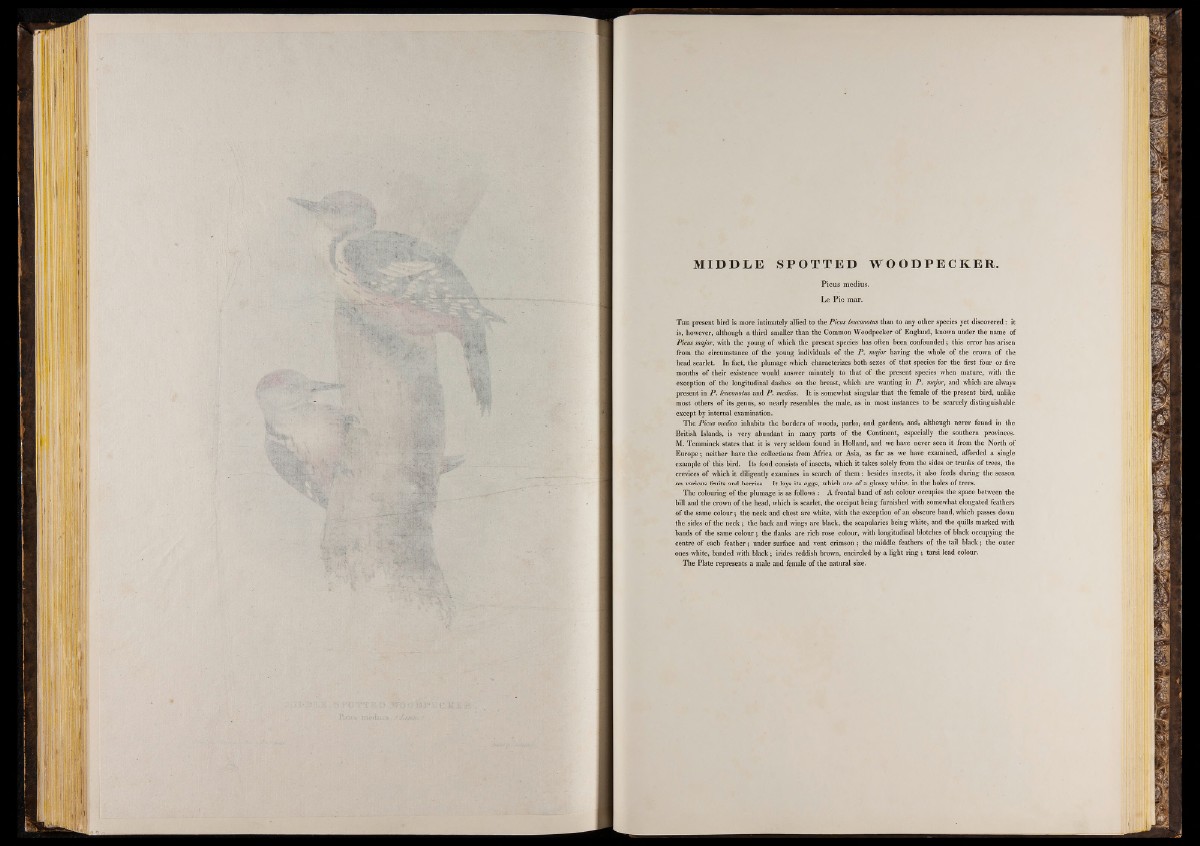
IB
-SMS
i n
I I 1
i W k
M I D D L E S P O T T E D WO O D P E C K E R .
Picus medius.
Le P ic mar.
The present bird is more intimately allied to the Picus leuconotus than to any other species yet discovered: it
is, however, although a third smaller than the Common Woodpecker of England, known under the name of
Picus major, with the young of which the present species has often been confounded; this error has arisen
from the circumstance of the young individuals of the P . major having the whole of the crown of the
head scarlet. In fact, the plumage which characterizes both sexes of that species for the first four or five
months of their existence would answer minutely to that of the present species when mature, with the
exception of the longitudinal dashes on the breast, which are wanting in P . major, and which are always
present in P . leuconotus and P . medius. It is somewhat singular that the female of the present bird, unlike
most others of its genus, so nearly resembles the male, as in most instances to be scarcely distinguishable
except by internal examination.
The Picus medius inhabits the borders o f woods, parks, and gardens, and, although never found in the
British Islands, is very abundant in many parts of the Continent, especially the southern provinces.
M. Temminck states that it is very seldom found in Holland, and we have never seen it from the North of
Europe; neither have the collections from Africa or Asia, as far as we have examined, afforded a single
example of this bird. Its food consists o f insects, which it takes solely from the sides or trunks of trees, the
crevices of which it diligently examines in search of them: besides insects, it also feeds during the season
on various fruits and berries. It lays its eggs, which are of a glossy white, in the holes o f trees.
The colouring of the plumage is as follows : A frontal band o f ash colour occupies the space between the
bill and the crown o f the head, which is scarlet, the occiput being furnished with somewhat elongated feathers
of the same colour; the neck and chest are white, with the exception of an obscure band, which passes down
the sides of the neck; the back and wings are black, the scapularies being white, and the quills marked with
bands of the same colour; the Hanks are rich rose colour, with longitudinal blotches of black occupying the
centre of each feather; under surface and vent crimson; the middle feathers o f the tail black; the outer
ones white, handed with black; irides reddish brown, encircled by a light ring ; tarsi lead colour.
The Plate represents a male and female of the natural size.